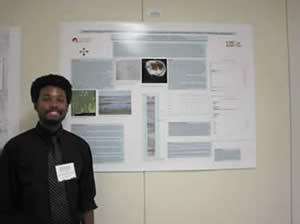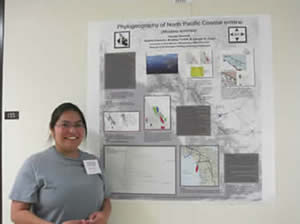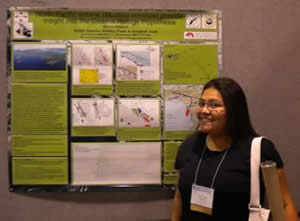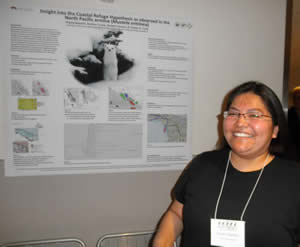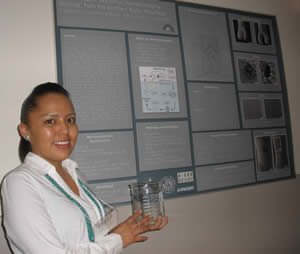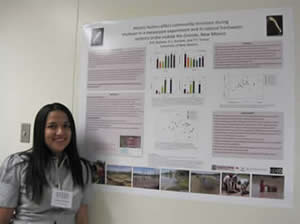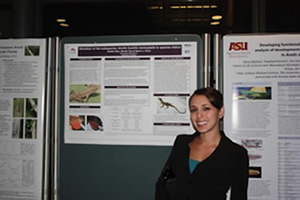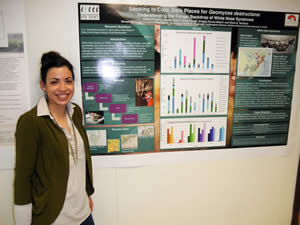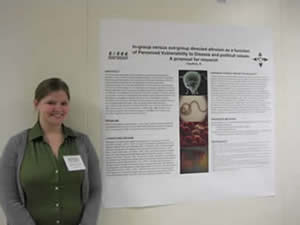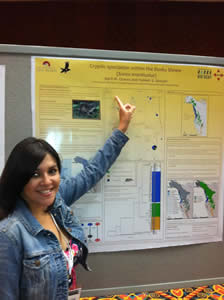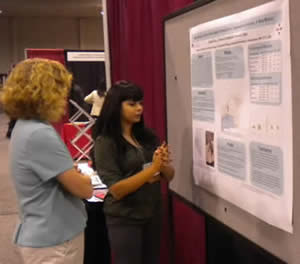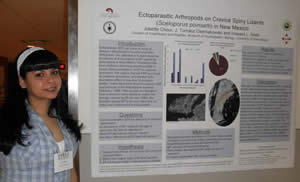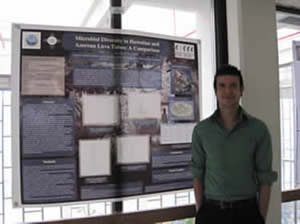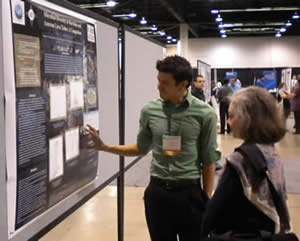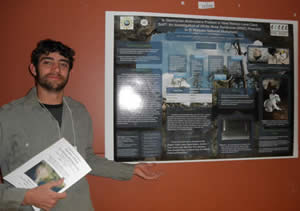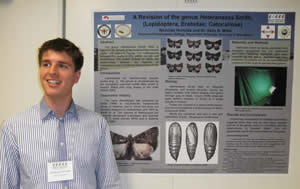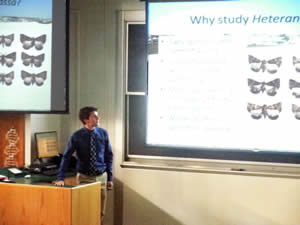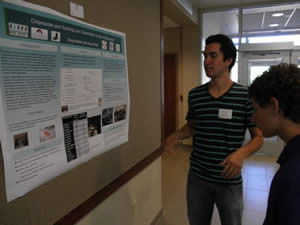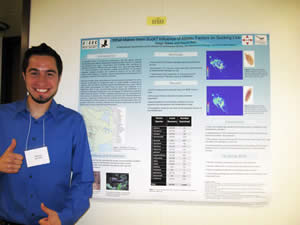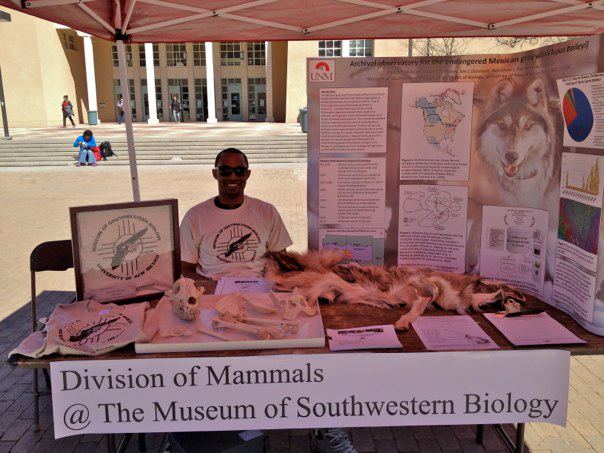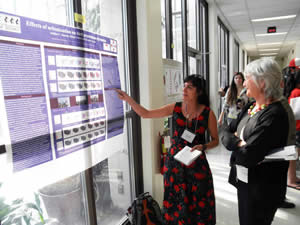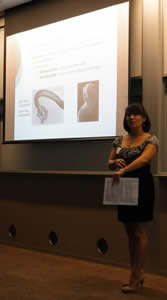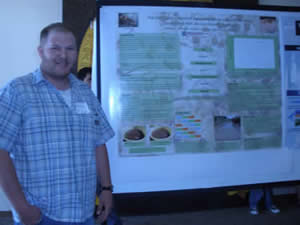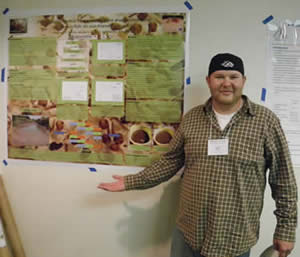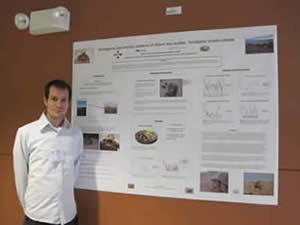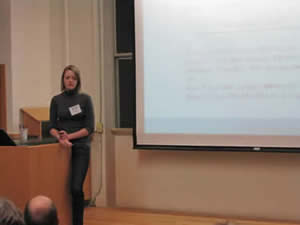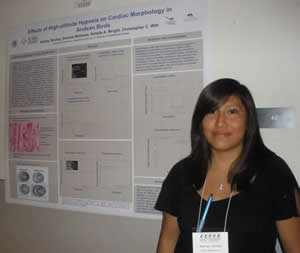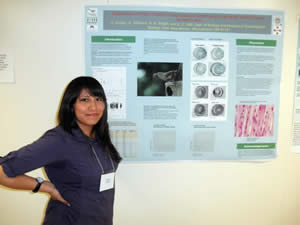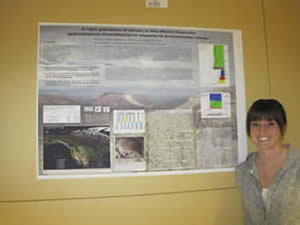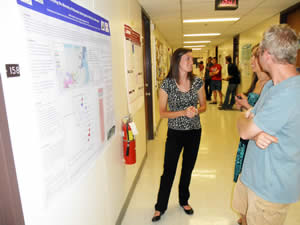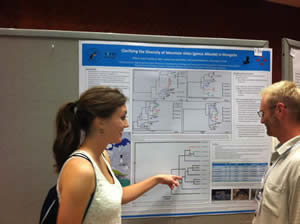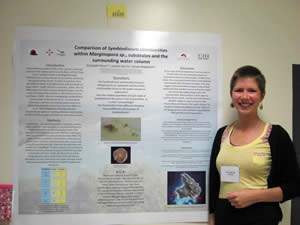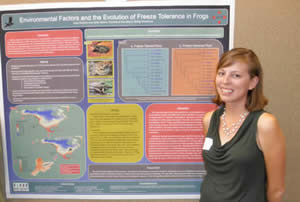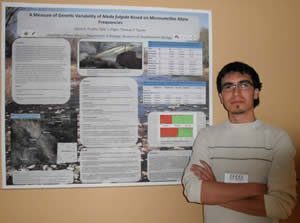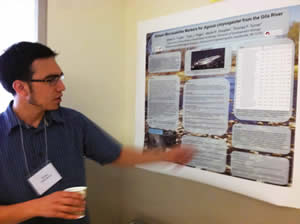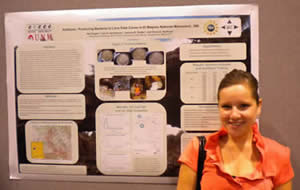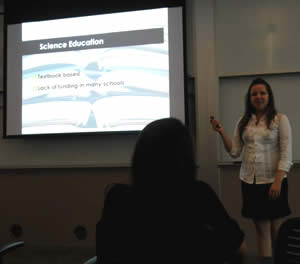|
You are what you eat: the key role of mesquite in promoting survival in an extreme environment
Authors: Martin, JT, Smith, FA, Lease, HM, Murray, IW, and Harding, LE
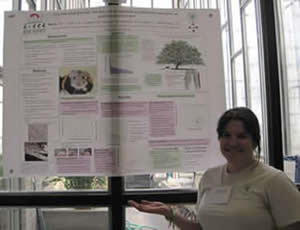
|
American Society of Mammalogists Annual Meeting, 2009
94th ESA Annual Meeting, 2009
MARC/IMSD Research Symposium; Albuquerque, New Mexico; 2009
18th Annual Research Day, UNM Biology Department, 2010
19th Annual Research Day, UNM Biology Department, 2010
|
Death Valley, California, is one of the hottest, driest places in the western hemisphere. Summer daytime temperatures are regularly over 50°C, and rainfall averages less than 5 cm a year. This extreme environment is home to a thriving population of Desert Woodrats (Neotoma lepida). Unlike other populations of N. lepida, the Death Valley population is completely dependent on a single species of plant, Honey mesquite (Prosopis glandulosa), for survival. Mesquite is the sole source of thermal protection, protection from predators, water, and food. Members of the Smith lab have trapped woodrats in Death Valley since 2004 and found that there are significant differences in persistence (a proxy for fitness) across our study site. Here, I analyze several characteristics of the mesquite plants that might contribute to the differences in fitness we observed: spinyness, overall size, nitrogen content, fiber, water content, and phenolics. We found that there is substantial heterogeneity in persistence across our study site by mesquite clump, indicating that mesquite is important in affecting persistence. Thus far, we found no relationship between persistence and mesquite clump size or water content. We found a positive relationship between spine density and persistence, which suggests that spinier mesquite plants are able to better protect rats from predators. We also found a positive relationship between winter fiber content and persistence. This research contributes to our understanding of the ecology of N.lepida living in an extreme environment, as well as our general understanding of how organisms adapt and interact in extreme environments. |
|
Not in my backyard: geographic patterns of environmentalism in the U.S.
|
International Biogeography Society Meeting, 2009
poster presentation
|
How do geographic, cultural, economic, and social factors interact to influence human behavior? More specifically, which factors determine how much value people place on the environment and influence them to the extent that they are willing to donate to conservation organizations? It has been argued that examining economic behavior is an accurate way to investigate individuals’ values. Here, I used state-level data of donations to conservation organizations as a proxy for the value people place on environmental protection across the USA. I then chose several factors that I felt might influence donations—income, education level, political climate, population density, and housing unit density—and analyzed these factors in a geographic context. Data were derived from the U.S. Census Bureau. I used Pearson’s r correlations and a Pearson Chi-squared test to analyze the data. My results suggest that both medium income and education level were significantly and positively correlated with the amount donated. Political climate was related to donations, with Democratic (liberal) states having significantly higher donations than Republican (conservative) states. Population density was not significantly correlated with donations, while housing unit density was significantly and negatively correlated with donations, suggesting that urbanization may influence donations. My findings clearly indicate that there is a relationship between geography and environmentalism in the USA. Further examination of individual values and donation level would lead to a better understanding of the factors that contribute to how much value people place on the environment. |




